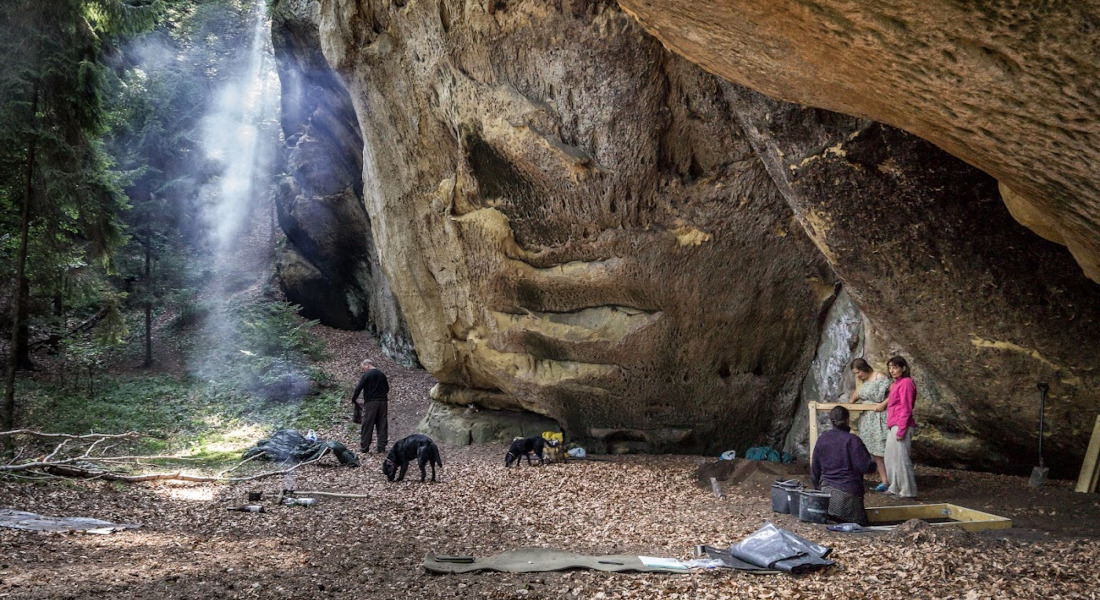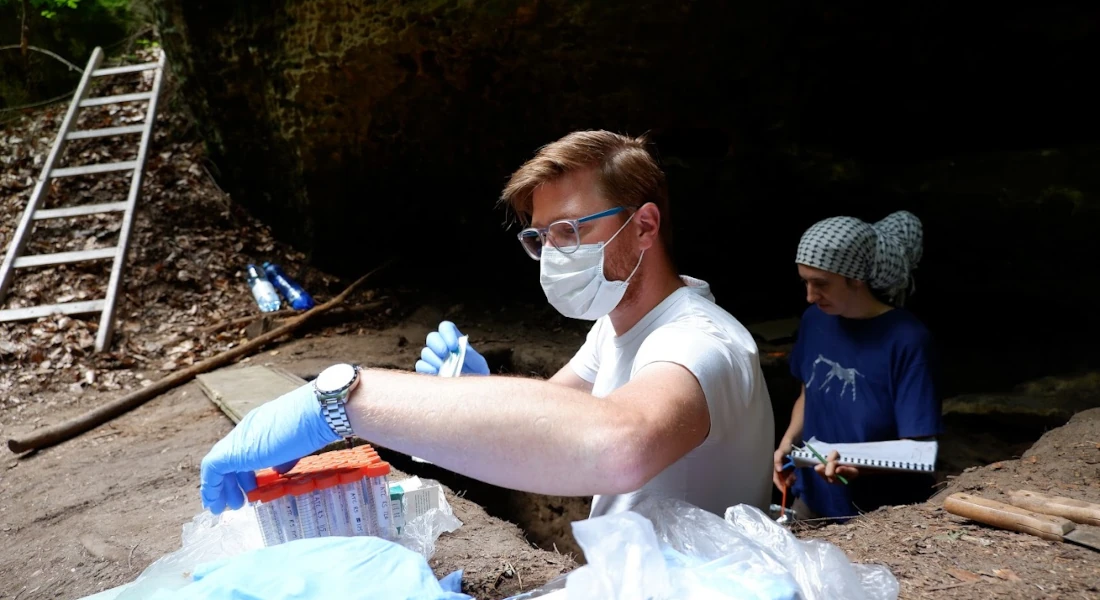New DNA Evidence Reveals How Early European Farmers Shaped Forest Ecosystems

Copenhagen, Denmark – A study published in Current Biology uses ancient DNA preserved in dirt to uncover how early European pastoralists shaped the structure of Central European forests. The study, led by a multidisciplinary team from institutions across Europe and North America, reveals that domesticated animals such as sheep and pigs were actively grazed in forest environments as early as 6,000 years ago. This may have had lasting effects on forest ecosystems, setting the stage for long-term environmental changes that still influence forest landscapes today.
The research, conducted at the Velký Mamuťák rock shelter in northern Bohemia (Czech Republic), shows how forest grazing practices evolved from the Late Neolithic into the Bronze Age, shifting from a dominance of sheep to pigs, which significantly impacted forest composition and soil health. The study, funded by the Carlsberg Foundation and the Social Sciences and Humanities Research Council of Canada, was led Mikkel Winther Pedersen (University of Copenhagen), Petr Pokorný (Charles University), and Matthew Walls (University of Calgary), and was part of Giulia Zampirolo’s (University of Copenhagen) doctoral work. The team used cutting-edge sedimentary ancient DNA (sedaDNA) to trace the ecological effects of early pastoralism on forests, offering new insights into the deep history of human-environment interactions.
Key Findings:
Sheep to Pig Transition: The study revealed a shift from sheep to pig grazing during the Bronze Age (around 4,000 years ago). This change in grazing patterns is linked to a significant transformation in forest ecosystems, leading to species-poor conditions still visible today in many Central European forests.
Impact of Grazing on Forest Structure: Grazing by domesticated animals, particularly pigs, aligns with observations of changes in forest succession, contributing to nutrient depletion and habitat fragmentation. These findings offer new perspectives on how early human activities shaped the landscapes we see today.
Innovative Use of Ancient DNA: By extracting and analyzing ancient DNA from sediment layers, researchers were able to reconstruct past human-environment actions and detect the presence of domesticated animals and associated microbiomes—something traditional archaeological methods had struggled to achieve.
“Our research shows how our forests have deep human histories that we take for granted when we think about their conservation,” says Doc. Petr Pokorný, at Charles University, one of the study's senior contributors and a researcher at Charles University. “Our new approach using ancient DNA allows us to trace these changes in a way we couldn’t before and reminds us that the answers are in the dirt. Rock shelters are archives of human-environment systems” adds Dr. Mikkel Winter Pedersen, an Assistant Professor at University of Copenhagen.
Significance and Broader Implications:
This research reveals long-term consequences of human land use and offers a deep historical context for understanding current challenges in forest conservation and biodiversity. The study's findings suggest that human influence on forests began much earlier than previously thought and was shaped by the movement and management of domesticated animals.
“By studying how ancient societies interacted with their environment, we can better understand the roots of the Anthropocene—the era in which human activity has become a dominant force shaping ecosystems,” said Dr. Matthew Walls, co-lead author and Associate Professor at the University of Calgary. “This study emphasizes how the choices made by early farmers are still reflected in health of forests today.”
Methodology:
The team conducted a detailed analysis of sedimentary ancient DNA from the Velký Mamuťák rock shelter in the Český Ráj region, known for its exceptional preservation of organic material. The researchers analyzed 22 samples from stratigraphic layers dating from the Early Holocene (around 12,000 years ago) to recent times, using next-generation sequencing to detect ancient DNA traces of animals, plants, and microbes. Their results offer a novel view of how human activities, particularly those of early farmers, influenced forest ecosystems over millennia.

“This new technology opens up exciting possibilities for understanding past environments,” said Dr. Giulia Zampirolo, the study’s first author. “With sedaDNA, we can fill in the gaps left by traditional archaeological methods and promotes cross-disciplinary collaborations between archaeologists, paleo-ecologists and paleo-geneticists”.
Next Steps:
The research team plans to apply these insights from ancient DNA approach to other archaeological and paleoecological sites across Europe, to further explore how ancient land use practices shaped the natural world.
“Expanding this research will help us trace the broader environmental impacts of early human activities in Czech Forests,” said Doc. Petr Pokorný, a senior researcher involved in the project. “These insights are crucial as we work to address modern environmental challenges in Czech Republic, such as forest resilience and management.”
About the Authors:
This study was led by Giulia Zampirolo and Mikkel Winther Pedersen from the University of Copenhagen, and Matthew Walls from the University of Calgary. The team also included a transdisciplinary team of researchers from institutions across Denmark, the UK, Japan, and the Czech Republic.
Contact Information:
Dr. Mikkel Winther Pedersen
Centre for Ancient Environmental Genomics, Globe Institute, University of Copenhagen
Email: mwpedersen@sund.ku.dk
Dr. Matthew Walls
Department of Anthropology and Archaeology, University of Calgary
Email: matthew.walls@ucalgary.ca
Phone: +420 776 538 045
